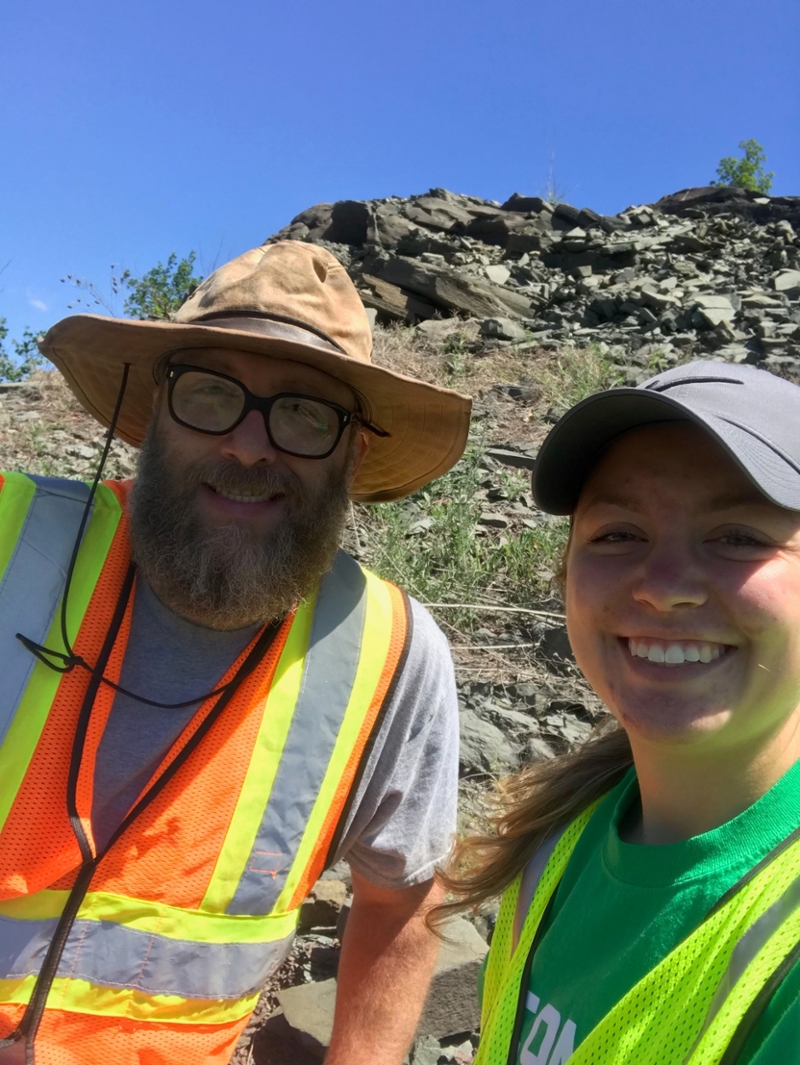
Download Image: Web
A team of paleontology researchers led by Lycoming College has discovered a well-exposed section of the Catskill Formation in North-Central Pennsylvania that contains abundant macrofossils and sedimentary features that make it well-suited for Upper Devonian fossil occurrences. Their research, entitled, “Vertebrate Taphonomy, Paleontology, Sedimentology, and Palynology of a Fossiliferous Late Devonian Fluvial Succession, Catskill Formation, North-Central Pennsylvania, USA” was published in the December issue of Palaios, an academic paleontology journal.
David Broussard, Ph.D., assistant professor of biology and chair of the department at Lycoming College, led the research and writing project in 2018-2019. He explained that by combining different types of evidence, including the abundance and types of fossils and changes in the rocks, it became evident that the paleoenvironments preserved at Late Devonian (~362 million years ago) Catskill Formation outcrops near the towns of Blossburg and Covington in Tioga County, Pa., changed ecologically over time. These coastal paleoenvironments included large rivers and small streams that periodically flooded, producing muddy floodplains and swamps. When these floods occurred, ancient fish that lived in these waterways were pushed out onto the floodplain, died, were covered by sediments, and were eventually preserved as fossils to be found millions of years later. As floods receded, plants colonized these thick layers of mud that also preserve various trackways of invertebrate animals. Over time (~2 million years), these habitats transitioned from mostly slow-moving small streams and floodplains to larger, faster moving rivers that were forming due to glaciation (due to global cooling) and increased mountain-building to the east at the end of the Devonian Period.
These findings mean the area is ripe for future fossil discovery. “There are several Catskill fossil sites to be more intensely studied in nearby Tioga and Bradford Counties, which we already knew before we started this project,” said Broussard. “But finding so much fossil diversity at the Blossburg-Covington outcrops has convinced us to focus on similar types of paleoenvironments preserved at similar outcrops nearby. As we discover and study more fossil sites in North-Central Pa, we will improve our understanding of Late Devonian terrestrial ecosystems.
With funding from a Lycoming College Student Research Grant, Broussard was able to take on biology major Cayla Treaster ’19 to assist with the work. “Perhaps the best way for students to learn about science is to create and carry out a project from start to finish,” he said. “Cayla did exactly this. She formulated questions and hypotheses and collected her own data in the field. She also contributed to the entire publication process that included writing, addressing reviewer comments, and examining final proofs of the paper.”
“I took a few of Dr. Broussard’s classes and I couldn’t believe you could find fossils so close to campus. I’ve always been interested in fossils but never thought I would have the opportunity to perform paleontology research,” said Treaster, who is now working as a water management specialist at Special Pathogens Laboratory in Pittsburgh, assessing water systems and helping clients reduce risk of Legionella. “I learned so much from this research experience and it opened a door to geology that I hadn’t considered before. I think it’s neat that we can look at trends in the fossil record, apply them to what’s currently happening in the world, and attempt to predict future outcomes. Research with Dr. Broussard also helped solidify my interest in attending grad school. I have been looking into programs and I hope to find one that combines my interests!”
The paper, written by Broussard, Treaster, Jeff Trop of Bucknell University, Ted Daeschler of The Academy of Natural Sciences of Drexel University, Pierre A. Zippi of Biostratigraphy.com, Matthew B. Vrazo of The Food Trust, and Michael C. Rygel of SUNY Potsdam, can be read in full at: http://dx.doi.org/10.2110/palo.2020.005.